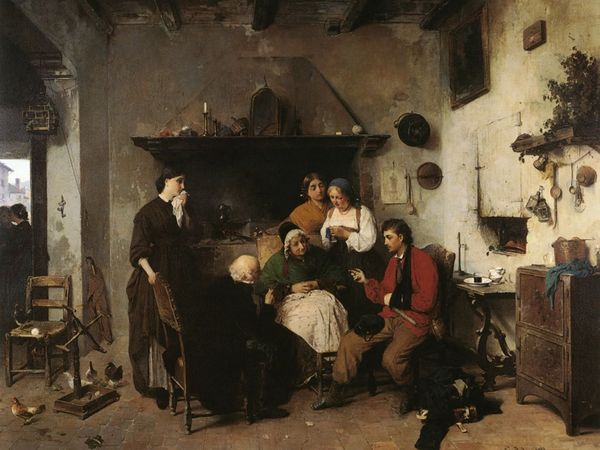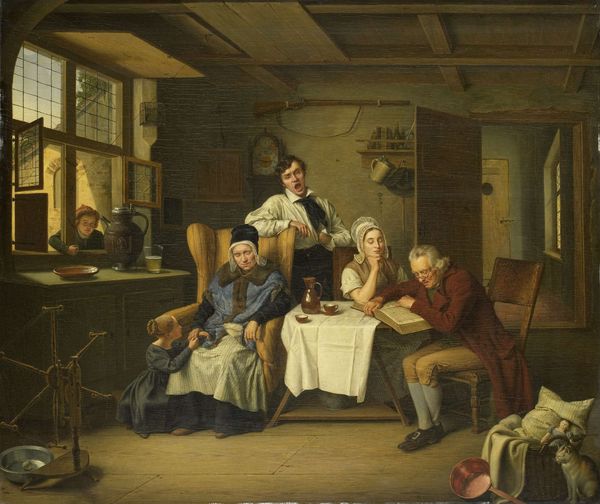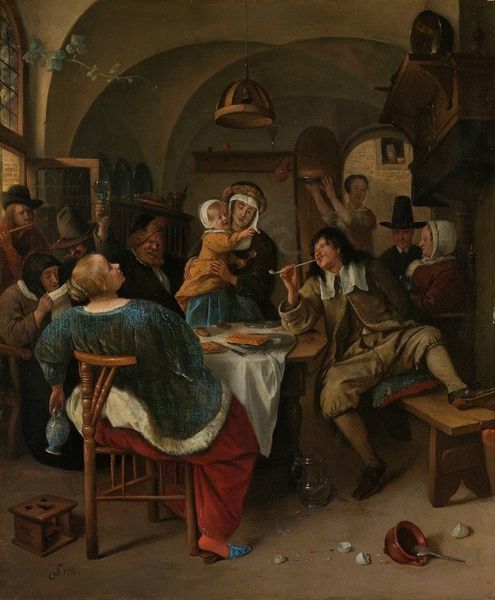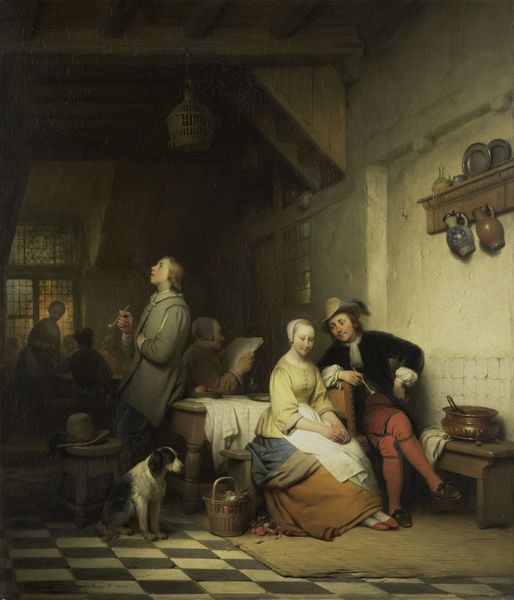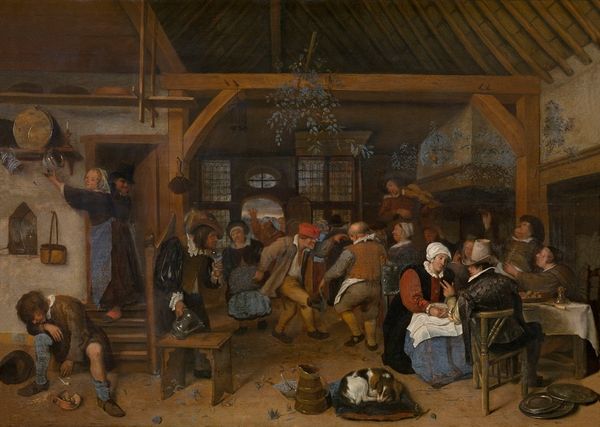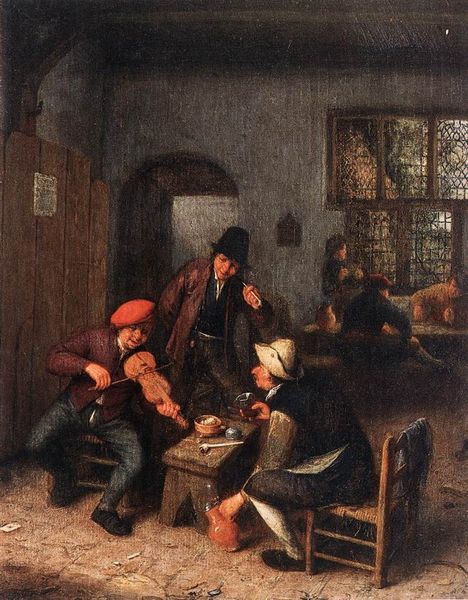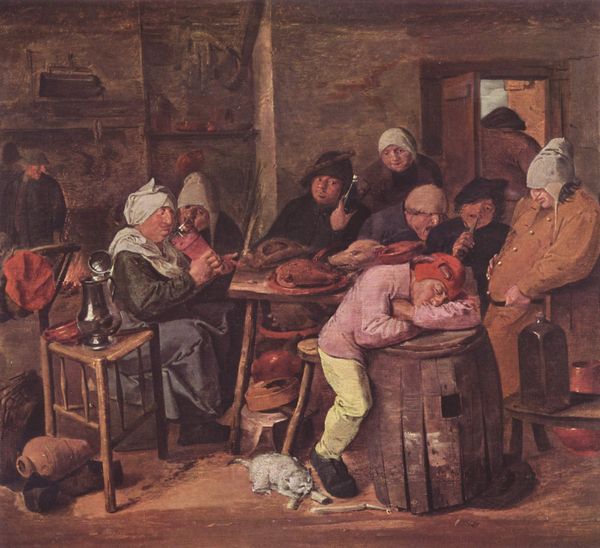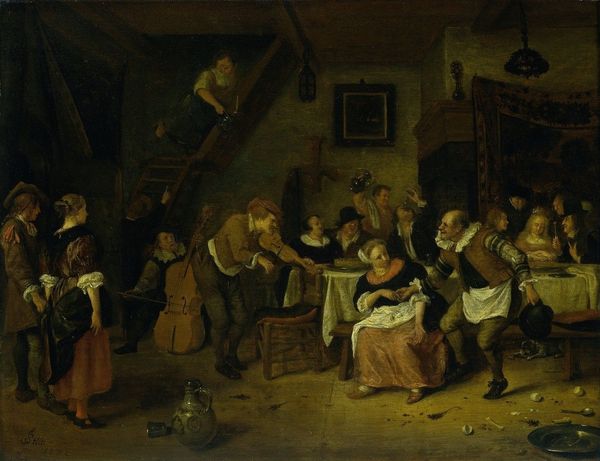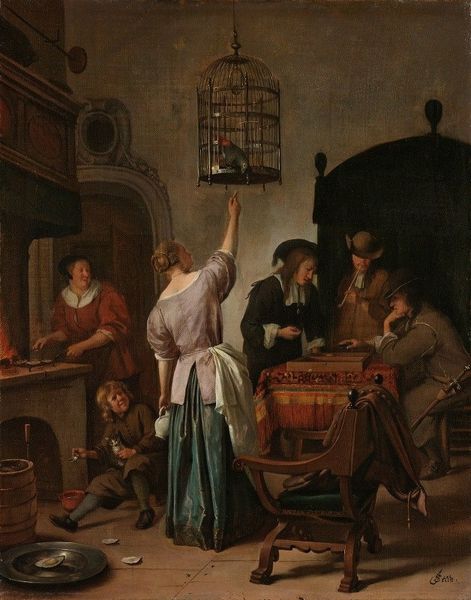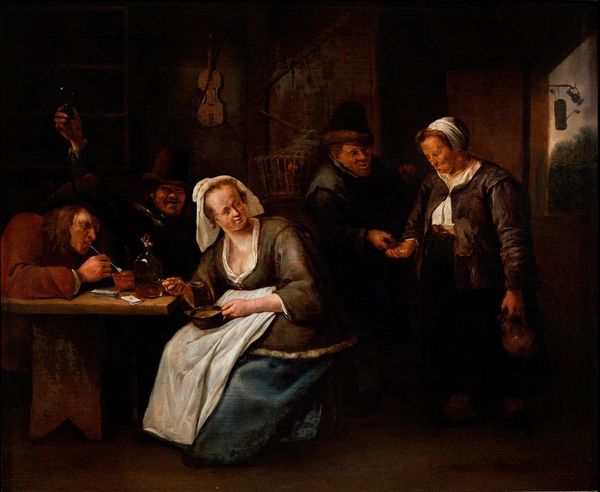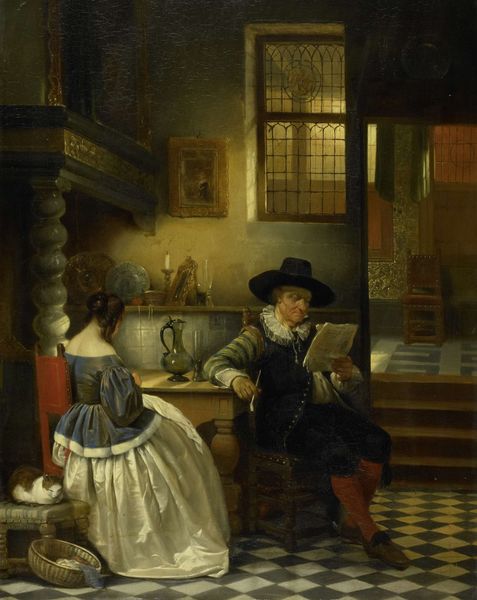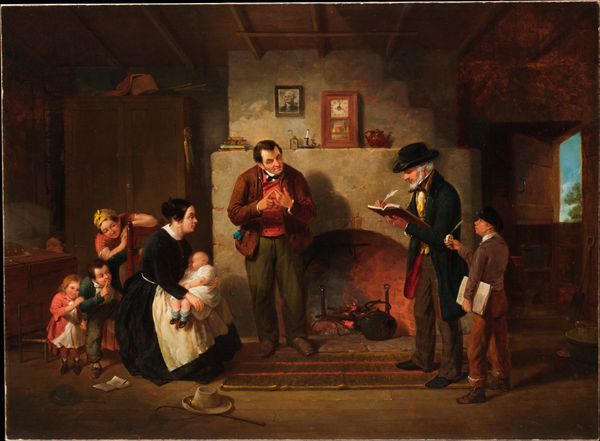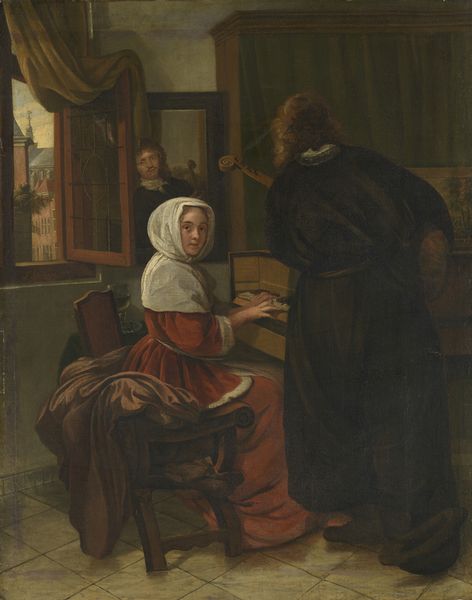
painting, oil-paint
#
portrait
#
painting
#
oil-paint
#
oil painting
#
romanticism
#
genre-painting
#
portrait art
Dimensions: height 45 cm, width 55.5 cm
Copyright: Rijks Museum: Open Domain
Curator: As you gaze upon this genre painting from 1828, you’re seeing Charles van Beveren’s “The Soldier’s Farewell.” The Rijksmuseum is fortunate to have it in its collection. Editor: Immediately, a sense of restrained sadness washes over me. It’s domestic, but weighted with the gravity of the soldier's departure. Curator: Indeed. Van Beveren encapsulates a moment of social history. This painting reveals much about military conscription and its disruption of Dutch family life. Look at the composition; the soldier is poised at the threshold, betwixt home and… something else. Editor: Thresholds are key, aren't they? Doorways are charged with symbolism, transitions. This young soldier stands at the intersection of duty and familial love. Notice the collection of hats and the broom on the floor near the exit. Van Beveren utilizes a language of household objects to convey an overwhelming emotion. Curator: Precisely! Moreover, consider that genre paintings such as these were quite popular, often commissioned by members of the rising bourgeoisie to serve a reminder of military action abroad in domestic settings. The political resonance of imagery is never an easy code to crack! Editor: Agreed, this wasn’t simply about artistry. I see an element of Romanticism, in how it distills idealized emotions related to home and country, but is that too simplistic? Curator: Not at all! The visual language of Romanticism—the emotionalism, the emphasis on feeling—provided an appropriate template for portraying personal struggles and triumphs linked to larger societal concerns, most specifically of course, military deployment. Note the mother’s placement – is she protective of her children from harm? What is the significance of her attire versus the younger woman’s headwear? Editor: The older woman's face does suggest the anxiety of what she may know about loss. While the soldier clasps the hand of who might be his young bride or sister; he shakes hands with a paternal figure in civilian dress as if solidifying a promise. Curator: These nuanced readings invite us to engage with this slice of Dutch history beyond a simple scene of leave-taking. This artwork is both affecting and thought-provoking. Editor: Van Beveren creates a moving moment— a snapshot into a common struggle; but, perhaps by observing all its symbolic nuance, we see both the ordinary and profound weight it would have on this family's life.
Comments
No comments
Be the first to comment and join the conversation on the ultimate creative platform.
